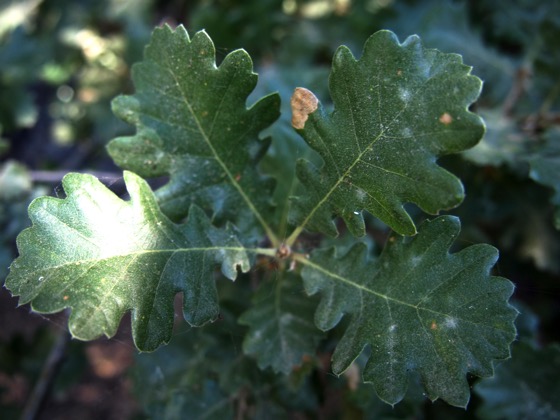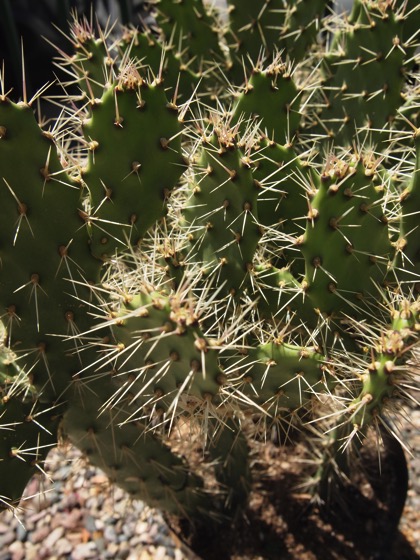In the natural world, flowers get all the attention and I have been guilty of perpetuating that bias here in my own blogs. That said, leaves are amazing, too, so in this series I will highlight the many forms of leaves available out there. — Douglas
Oak (Quercus)
I grew up in the land of maple trees, so oaks always seemed a bit foreign. Even so, they were always the quintessential leaves of Autumn bulletin boards at school and in retail shops through town. I don’t remember many real oak trees in my rural Ohio farmland, but I found it easy to identify them by their leaf shape and acorn fruit.
Moving to Los Angeles, 30 years ago, I suddenly found myself surrounded by oak trees, but they were as much unlike the stereotypical oaks of my childhood as the maple trees that overarched the main streets of my hometown. Here we have live oaks, or oak trees that are evergreen, losing only a portion of their leaves at one time. Their leaves are also small, thick and waxy, as befits survival in our often drought-stressed environment. In fact, these oaks are often the only green you see among the “golden” rolling hills as this time of year. Everything else is dead or dormant and awaiting the return of the winter rains — of they decide to appear.
These leaves are different still, taken near our family’s home on the flanks of Mount Etna in Sicily inside of the Parco Dell-Etna UNESCO World Heritage Site. I spotted them among the pine trees, olive trees and fruit trees surrounding the par’s headquarters near Nicolosi, CT, Italy.
Photo; Douglas E. Welch
An oak is a tree or shrub in the genus Quercus (/ˈkwɜːrkəs/;[1] Latin “oak tree”) of the beech family, Fagaceae. There are approximately 600 extant species of oaks. The common name “oak” may also appear in the names of species in related genera, notably Lithocarpus. The genus is native to the Northern Hemisphere, and includesdeciduous and evergreen species extending from cool temperate to tropical latitudes in the Americas, Asia, Europe, and North Africa. North America contains the largest number of oak species, with approximately 90 occurring in the United States, while Mexico has 160 species of which 109 are endemic. The second greatest center of oak diversity is China, which contains approximately 100 species.[2]
Oaks have spirally arranged leaves, with lobate margins in many species; some have serrated leaves or entire leaves with smooth margins. Many deciduous species aremarcescent, not dropping dead leaves until spring. In spring, a single oak tree produces both male flowers (in the form of catkins) and small female flowers.[3] The fruit is anut called an acorn, borne in a cup-like structure known as a cupule; each acorn contains one seed (rarely two or three) and takes 6–18 months to mature, depending on species. The live oaks are distinguished for being evergreen, but are not actually a distinct group and instead are dispersed across the genus. — Wikipedia
More information on Oak (Quercus):
- Oak on Wikipedia
- Oak at The Arbor Day Foundation
- Oak at Mother Earth News
- The Oak Trees of Southern California: A Brief History via KCET’s Lost LA
Previously in Garden Leaves:





